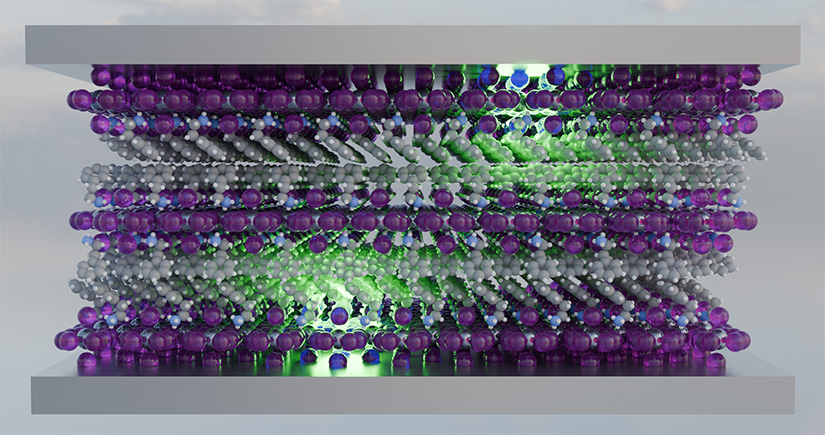Stronger Together: Coupling Excitons to Polaritons for Better Solar Cells and Higher Intensity LEDs

In solar cells and light-emitting diodes, maintaining the excited state kinetics of molecules against annihilation is a race against time. These systems need to strike a careful balance between different processes that lead to loss of energy and those that lead to the desired outcome.
A major loss mechanism especially in the highest efficiency systems is called exciton-exciton annihilation, leading to lowering of solar efficiency and of light output in LEDs. Controlling the amount of exciton-exciton annihilation is therefore an important lever that affects efficiency.
National Renewable Energy Laboratory (NREL) researchers working with researchers from University of Colorado Boulder sought to control exciton/exciton annihilation by coupling excitons with cavity polaritons, which are basically photons caught between two mirrors, to combat energy dissipation and to potentially increase efficiency in optoelectronic devices. As detailed in a recent article in the Journal of Physical Chemistry Letters, they used transient absorption spectroscopy to demonstrate control of the loss mechanism by varying the separation between the two mirrors forming the cavity enclosing the 2D perovskite (PEA)2PbI4 (PEPI) layer. This perovskite material is a candidate for future LED applications.
"If we can gain control over exciton/exciton annihilation in the active materials used in an LED or a solar cell, we could reduce the energy losses and therefore increase their efficiency by a significant amount," said NREL's Jao van de Lagemaat, the chemistry and nanoscience center director who led the study.
As the energy exchange between light and matter systems exceeds their decay rates, strong coupling between photonic and electronic states (i.e., excitons) occurs, forming polaritons, hybrid states of light and matter. The NREL researchers demonstrated ultrastrong coupling of the PEPI layer in a Fabry-Pérot microcavity consisting of two partially reflective mirrors. A PEPI layer that is more strongly coupled to the cavity produced a longer lifetime of the excited state and gave the researchers control over exciton-exciton annihilation—lowering the loss process by an order of magnitude.
The NREL researchers explained their observation by the quantum nature of the newly formed hybrid states. Polaritons shift back and forth extremely rapidly between being more photonic and more excitonic in nature. Since photons do not annihilate each other when they meet but excitons can, this ghost-like 'phasing' between the two particle characters allows polaritons to pass through each other if they happen to be more photonic at the precise moment they interact.
Tuning the coupling strength tunes the relative amounts of time polaritons spend as a photon and therefore offers control over the energy loss in these systems. "It was striking how such a simple experiment of placing a material between two mirrors changed its dynamics completely," said Rao Fei, a graduate student from the University of Colorado Boulder who fabricated the cavities and performed ultrafast spectroscopy measurements.
"We showed that strong coupling effects can be used to control the excited state dynamics of the PEPI system," van de Lagemaat said. "The simplicity of the system suggests that this result should translate into other active materials in LEDs and solar cells and could potentially be engineered into these applications using simple fabrication methods."
Learn more about basic energy sciences at NREL and about the U.S. Department of Energy Office of Science Basic Energy Sciences Program. Read "Controlling Exciton/Exciton Recombination in 2-D Perovskite Using Exciton–Polariton Coupling" in the Journal of Physical Chemistry Letters.
Last Updated May 28, 2025
